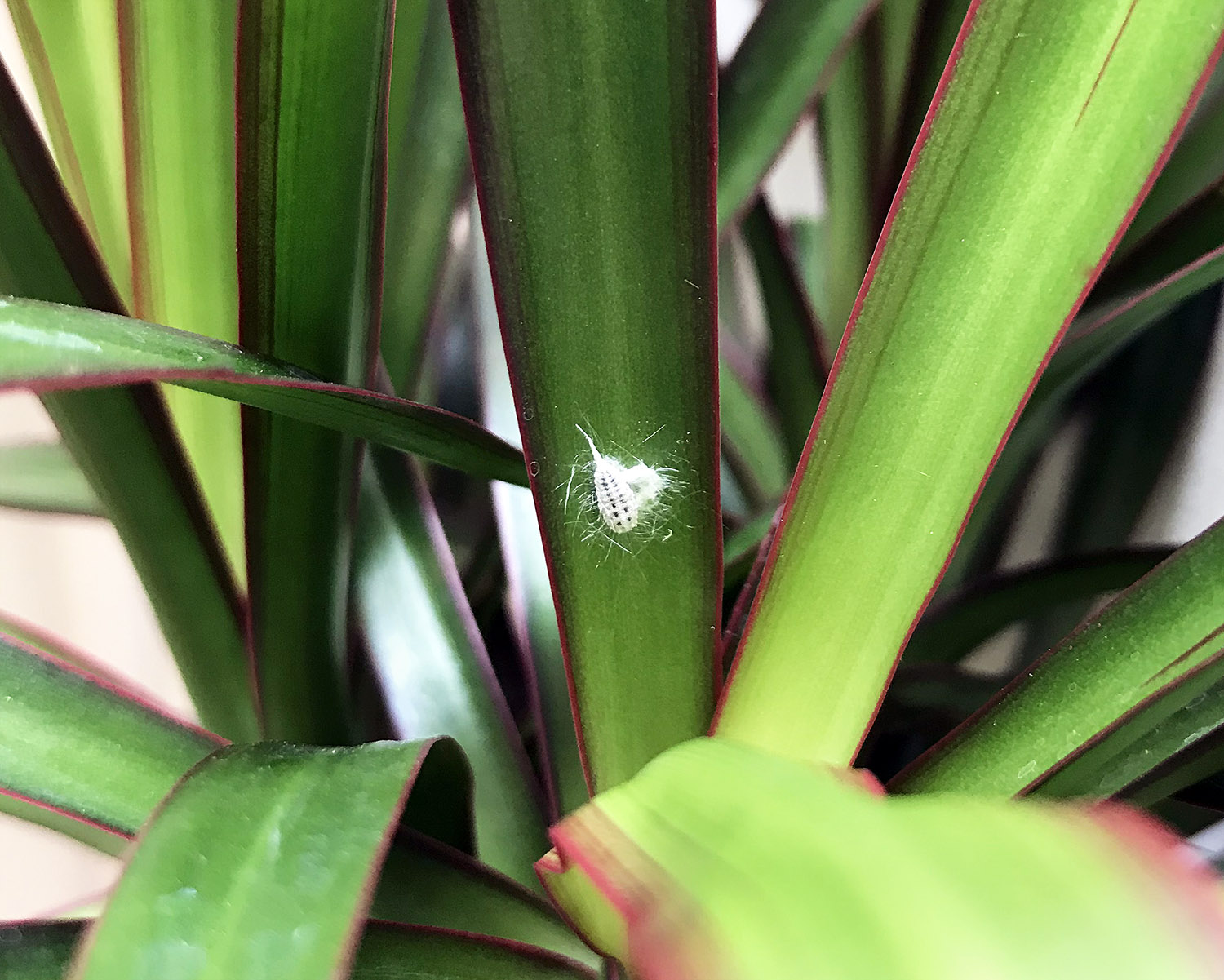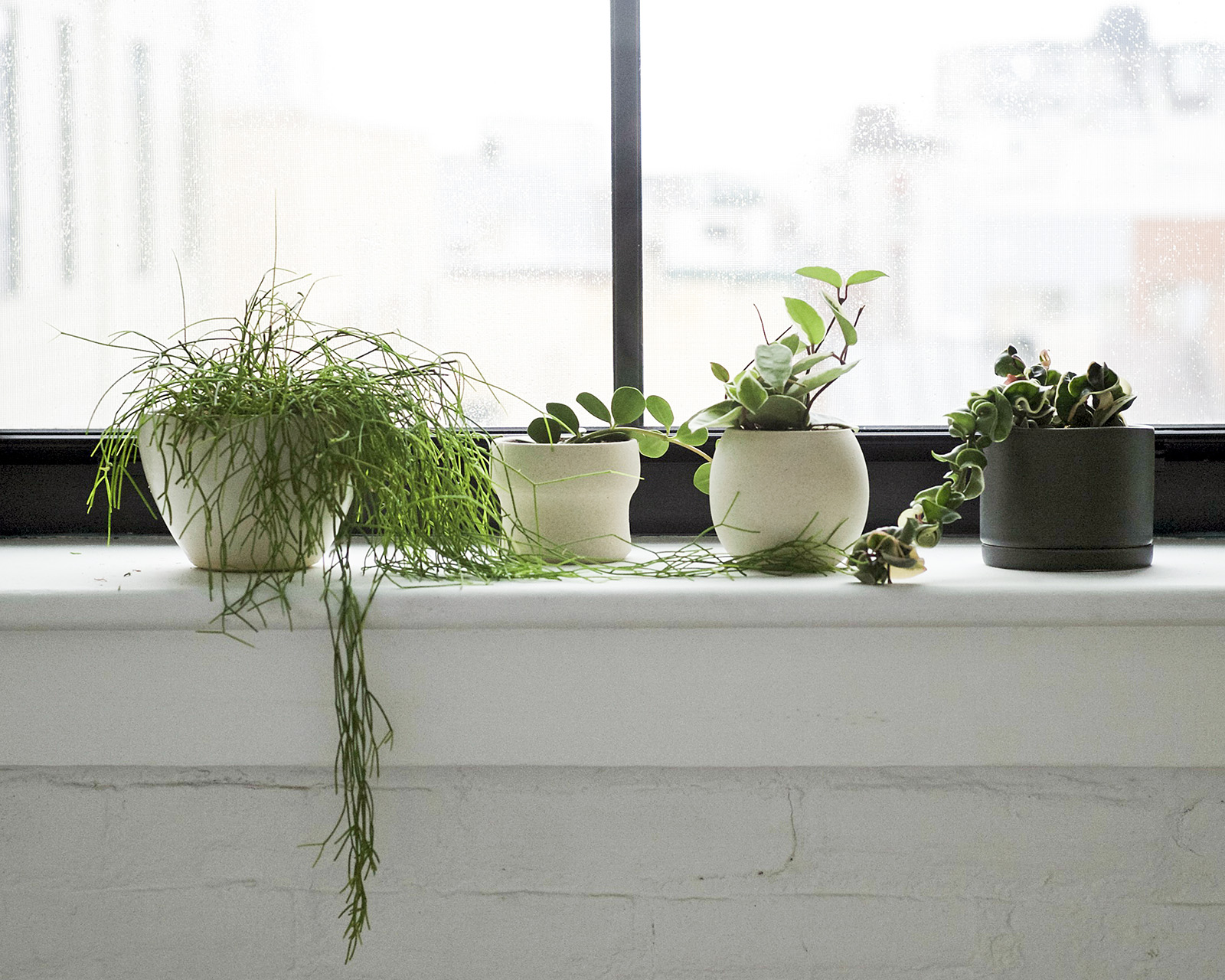Plant Pests and How to Deal with Them
Bugs. They exist outside, they make their way inside, and, unfortunately, some can find their way on to your plant. If you do notice pests on your plant, it’s not indicative of poor care on your part — it’s just nature taking its course. Fortunately, there are ways to eliminate and control the problem. In this post, we’ll talk about the most common types of pests that invade indoor plants, how to spot them, which plants are more commonly affected than others, and how to put an end to their reign of terror.
Spider Mites
Spider mites are the tiny white spots on the underside of this Calathea leaf.
Arguably one of the more problematic pests, spider mites are a member of the mite family, and they love to hang out on the underside of plant leaves. Spider mites vary in color from red, white, or brown, and are about one millimeter in size. However, they do live in colonies, making them easier to spot. The colonies infest plants and wreak their havoc by piercing leaf tissue, sucking your plants dry.
One of the major tell-tale signs of a spider mite infestation, and how they get their name, is the fine webbing they leave behind on the undersides of plant leaves. Besides the webbing, the sudden appearance of yellow or blotchy leaves is a sign they may be present on your plant.
Plants commonly affected: Aralia, Bird of Paradise, Calathea, Ivy, and Palm trees.
Mealybugs
White fuzzy areas on plants can be a sign of mealybugs. Pictured is an individual mealybug on a Dracaena marginata.
One of the easiest pests to spot, mealybugs look like little white globs of cotton, found on or near the stems and branches of plants. Much like spider mites, they feed on plant matter by piercing through the tissue, leaching sap and other nutrients. Besides the presence of the bug itself, they create a byproduct called honeydew, which is a sticky substance that coats the leaves and stems of your plant.
Plants commonly affected: Dracaena, Ficus trees, Hoya, Philodendron, Pothos, and succulents.
Scale
The white speckles on the cactus here are a type of scale insect.
With their name sounding more like a disease, the last major houseplant pest is a hard-bodied insect simply known as scale. They’re smaller than mealybugs at about two millimeters in size, with a shiny, oval body, and they come in varying shades of brown or white color. Scale attach themselves to the leaves, stems, and branches of houseplants to feed, much like the others.
Thankfully, these insects are simple to scrape off of plants with a dull knife (or something similar), which can help in controlling any kind of major infestation.
Plants commonly affected: Cacti, Euphorbia, and Ficus trees.
Fungus Gnats
While fungus gnats aren’t as destructive as the bugs listed above, we can all readily agree they’re annoying. The key to dealing with them is knowing their origin. Fungus gnats only appear when the soil is consistently moist for an extended period of time, which provides an ideal breeding ground for them and their larvae. This is most often caused by overwatering, and is easily corrected. As long as the top two inches of soil dry out between waterings, fungus gnats will have difficulty successfully laying eggs and continuing the life cycle, eventually dying off.
To treat for existing fungus gnats, spray the top of the soil with a mixture of dish soap and water about once a week. The soap and water mixture will help to dry them out and eliminate them as an issue. We also highly recommend fungus gnat sticky stakes.
Ways to Control and Eliminate Pests
With most of the pests listed above, it’s relatively easy to control any infestation and eventually get your plant nice and healthy again, especially if you catch them at the first signs of a problem.
The most cost-effective method of control is diligently dousing your plant in a mixture of dish soap [Dr. Bronner’s Castile Soap] and water (one teaspoon of soap per one quart of water works well). To get rid of any bugs, first wipe down all the leaves and stems of your plant, and then thoroughly spray your plant with the solution. Keep repeating this process once every week or two until you no longer see signs of any pests.
For smaller mealybug infestations specifically, take a q-tip dabbed in rubbing alcohol, and gently press it onto them — this will eliminate the mealybugs on contact.
*While you’re doing this, it’s also a good idea to quarantine the affected plant in a different room or location away from any other plants the insects could possibly spread to.
If you have any questions about plant pests or other good ways to get rid of them, feel free to ask or share down below, or come visit us in one of our shops!
Written by: Egan Thorne
Photos by: Emily Kellett





